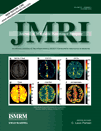Percent infarct mapping for delayed contrast enhancement magnetic resonance imaging to quantify myocardial viability by Gd(DTPA)
Abstract
Purpose
To demonstrate the advantages of signal intensity percent-infarct-mapping (SI-PIM) using the standard delayed enhancement (DE) acquisition in assessing viability following myocardial infarction (MI). SI-PIM quantifies MI density with a voxel-by-voxel resolution in clinically used DE images.
Materials and Methods
In canines (n= 6), 96 hours after reperfused MI and administration of 0.2 mmol/kg Gd(DTPA), ex vivo DE images were acquired and SI-PIMs calculated. SI-PIM data were compared with data from DE images analyzed with several thresholding levels using SIremote+2SD, SIremote+6SD, SI full width half maximum (SIFWHM), and with triphenyl-tetrazolium-chloride (TTC) staining. SI-PIM was also compared to R1 percent infarct mapping (R1-PIM).
Results
Left ventricular infarct volumes (IV) in DE images, IVSIremote+2SD and IVSIremote+6SD, overestimated (P < 0.05) TTC by medians of 13.21 mL [10.2; 15.2] and 6.2 mL [3.79; 8.23], respectively. SIFWHM, SI-PIM, and R1-PIM, however, only nonsignificantly underestimated TTC, by medians of −0.10 mL [−0.12, −0.06], −0.86 mL [−1.04; 1.54], and −1.30 mL [−4.99; −0.29], respectively. The infarct-involved voxel volume (IIVV) of SI-PIM, 32.4 mL [21.2, 46.3] is higher (P < 0.01) than IIVVs of SIFWHM 8.3 mL [3.79, 19.0]. SI-PIMFWHM, however, underestimates TTC (−5.74 mL [−11.89; −2.52] (P < 0.01)). Thus, SI-PIM outperforms SIFWHM because larger IIVVs are obtained, and thus PIs both in the rim and the core of the infarcted tissue are characterized, in contradistinction from DE-SIFWHM, which shows mainly the infarct core.
Conclusion
We have shown here, ex vivo, that SI-PIM has the same advantages as R1-PIM, but it is based on the scanning sequences of DE imaging, and thus it is obtainable within the same short scanning time as DE. This makes it a practical method for clinical studies. J. Magn. Reson. Imaging 2010;32:859–868. © 2010 Wiley-Liss, Inc.




